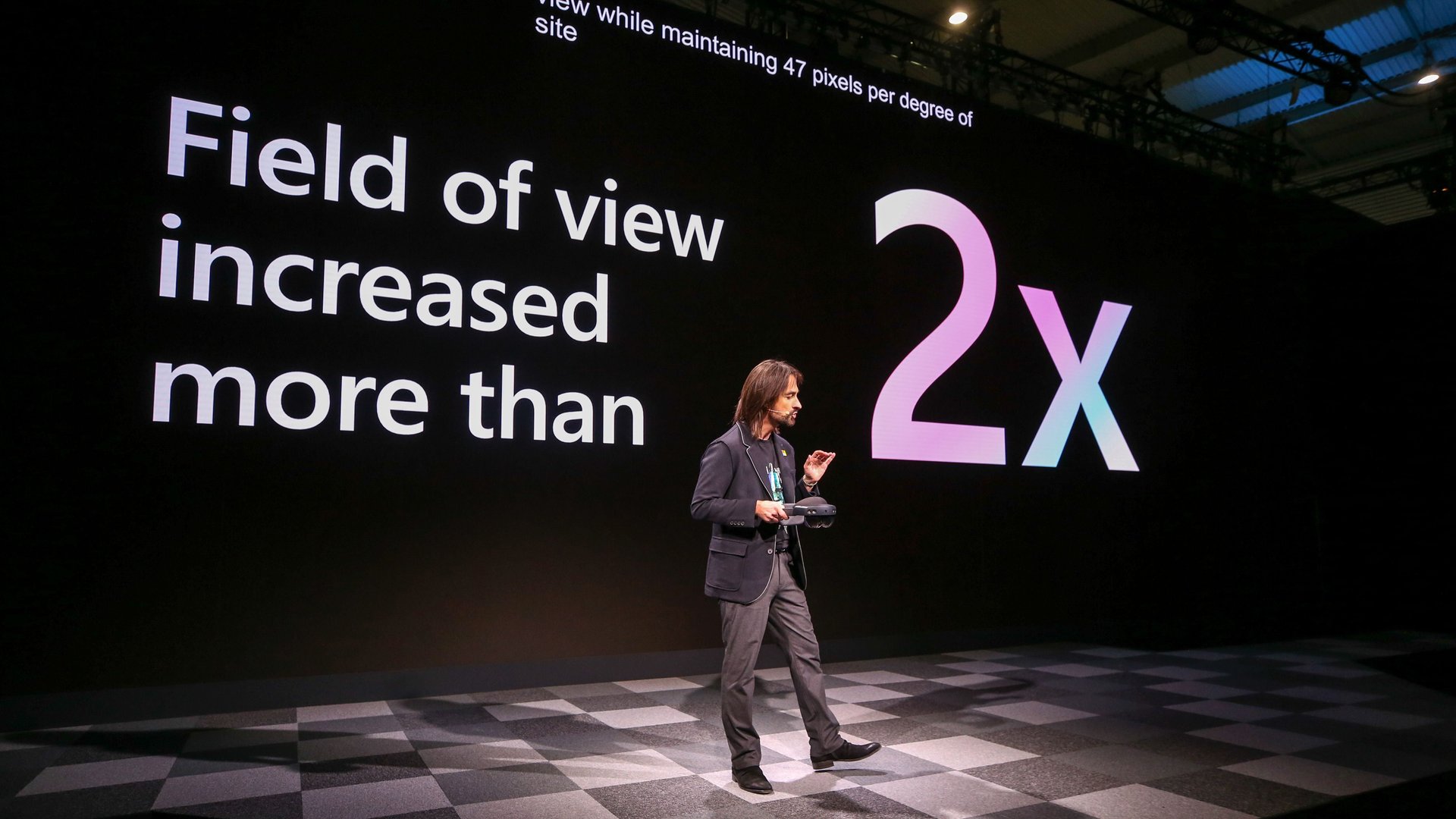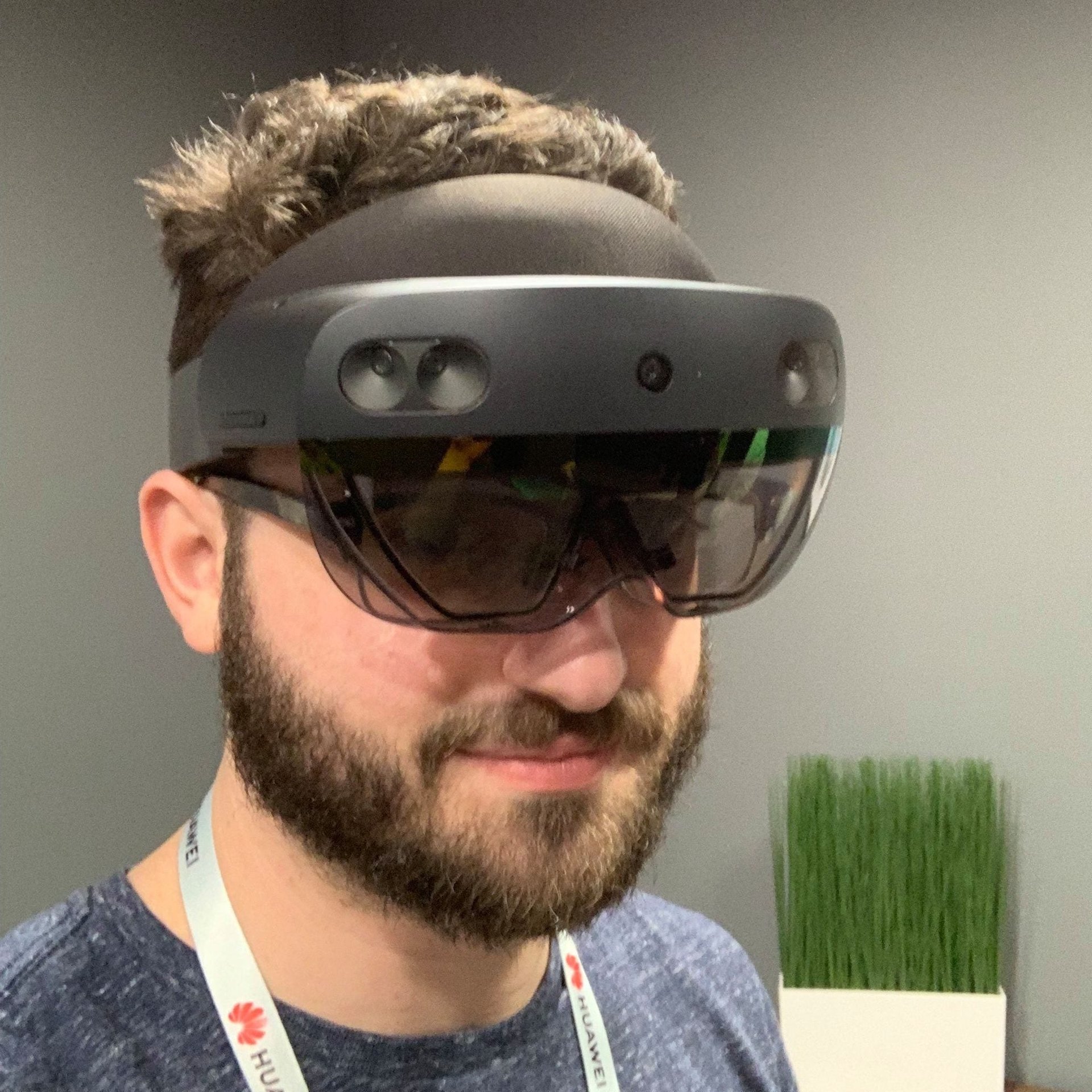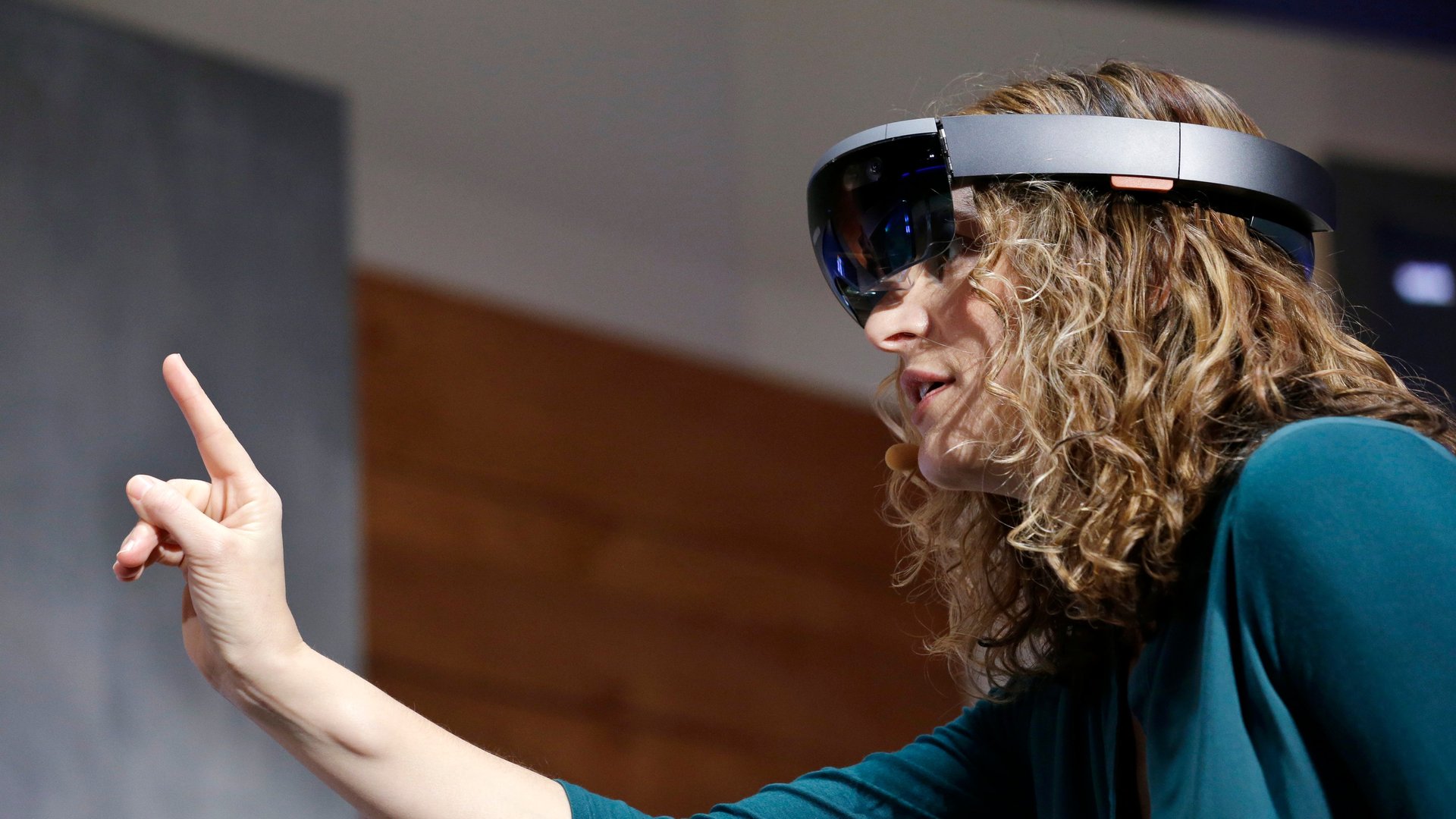The three things you notice when trying on Microsoft’s HoloLens 2
Microsoft announced the new HoloLens 2 on Sunday (Feb. 24), updating the mixed reality headset with a greater field of view, better ergonomics, and more processing power.


Microsoft announced the new HoloLens 2 on Sunday (Feb. 24), updating the mixed reality headset with a greater field of view, better ergonomics, and more processing power.
Quartz got a private demo of the HoloLens 2 at Mobile World Congress in Barcelona the morning after it was announced. This isn’t a comprehensive review, as we tried the device in a controlled environment for about 15 minutes. But with augmented reality headsets (of which we have tried many) the flaws typically start to emerge almost immediately.

Here’s what stood out when we tried the new HoloLens 2:
Field of view
The field of view on the HoloLens 2 is noticeably larger than its predecessor, released in 2016, which makes the experience drastically better from the first moment you put on the headset. This was the biggest concern with the first iteration of the headset—you just couldn’t see enough of the hologram for it to feel immersive.
Microsoft says there will be a walkthrough and calibration on the setup screen the first time users boot up the device, but for now it had a “manual” calibration where you shift your gaze to about 16 different points around the screen, which locks in the eye tracking. (More on that later.) The calibration box filled the entire field of view, which looked to be about the size of a 65″ television from five or six feet away.
At first (and at second) it felt impressive, and a step up from the previous generation of the device. However, once you started playing with objects bigger than the size of a microwave, the limitations of the field of view start to become apparent. It’s jarring to see digital items suddenly get cut out of view when they’re too big for the device’s field of view. If you have a floating screen of text, like a browser window or an info box describing a task in an industrial setting, seeing it disappear when you look elsewhere may create a brief moment of panic.
But if you’re looking at a few objects that aren’t enormous, or you have the space to step back and see the objects from afar, it’s a genuinely great AR experience. The objects don’t look necessarily real, as they’re translucent and still have some blur, but text is crisp and legible.
Comfort
Microsoft has redesigned how the HoloLens 2 sits on your head. Instead of the “floating ring” that had to be delicately positioned on your head for the original HoloLens, the industrial design direction for the HoloLens 2 was to mimic the ease and universality of putting on a hat.

“I want it to be instinctual,” Microsoft technical fellow Alex Kipman, who led the development of the HoloLens 2, told Quartz. “I don’t want it to be a learned behavior.”
Here, Microsoft succeeded: putting the device on your head and adjusting it is easy and intuitive. There’s a single knob on the back of the headset that turns to tighten or loosen the band.
But the biggest change in making the HoloLens 2 more comfortable is the redistribution of weight. The first device was front-heavy, since all the computing chips were located in the front, and in this iteration Microsoft has moved the center of gravity from 11 millimeters in front of the eye to 70 millimeters behind it, according to Kipman. Those numbers don’t really mean much conceptually, but when you put the device on, you immediately understand that this is a much more stable device. More of the weight is balanced around your whole head, rather than feeling like you’re wearing a very heavy headlamp.
You can also wear the HoloLens 2 with glasses, which is very nice for us nerds who wear glasses.
Eye tracking
Most impressive, however, was the HoloLens 2’s eye-tracking capabilities, which means it can tell where you’re looking and respond to voice commands to interact with that specific object. After the one-time eye-tracking calibration mentioned before, the sensors could accurately pick out one object about the size of a grapefruit from a closely-grouped array 6 feet away.
There were a few “wow” moments for me, and they all were centered around the way Microsoft had managed to make eye-tracking feel so integrated into the AR experience. During the demonstration, the Microsoft HoloLens designer who was walking me through the demonstration asked me to look at one of the grapefruit-sized objects that looked like a multi-faceted gem, and say “pop.” I did, and the one I was looking at popped. There was no gesture, no pointing, and the device didn’t preemptively pop the object I was looking at when the other person in the room said “pop.”
If you want to use gestures, Microsoft has expanded the types of gestures you could use to interact with the device. While in the first HoloLens you needed to master a specific pinch gesture for the cameras and depth sensors to understand certain inputs, the HoloLens 2 is much more forgiving, making the experience feel intuitive off the bat. For instance, you can move digital objects with one or two hands, and use more natural grips to move or resize things.
The real value of eye tracking is demonstrated when it comes to reading. A roughly 32″ text box floated next to a digital hummingbird, displaying a bit of text about the bird. As I read, the HoloLens 2 detected how fast my eyes were moving down the text and began to scroll, accelerating and decelerating as my reading sped up and slowed down. The effect was seamless. I intuitively looked down at the bottom of the text box when I saw a bit of white space after a paragraph, and more text scrolled up to meet my gaze.
A lot of this sounds like a fluffy review of a device I got special access to, but after trying nearly every VR headset, smart glasses device, and AR headset at the last few CES conferences and tech shows (including the Magic Leap), the HoloLens 2 was the first that genuinely impressed me with the technology that was already in the device, rather than the promise of the platform.
Microsoft isn’t selling these to consumers like you and me just yet—the HoloLens 2 is still an enterprise device with a price tag of $3,500. The company is partnering with healthcare and engineering firms for the first rollout, for frontline workers to use on the job. But consumer AR is undoubtedly coming, and whenever it decides to make a consumer headset, Microsoft has a head start.